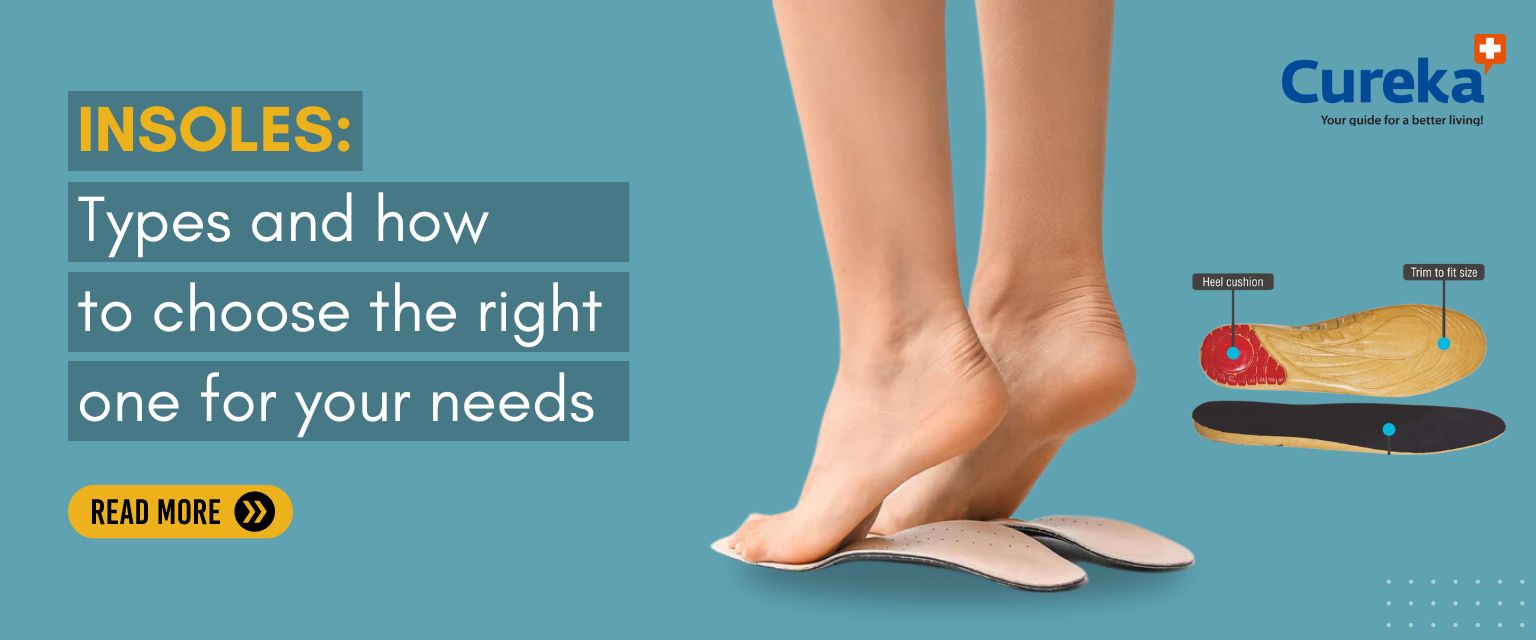Insoles: Types and How to Choose the Right One for Your Needs
Are you a person who never rests your feet? Have you tried many types of footwear and fretted because of pain? Then this blog is for you. You don’t have to keep changing your shoes, boots, or casuals. Choosing an appropriate insole could help you relieve pain even if you stand for longer hours. When you are active, let not your foot pain slow you down. Insoles play a very important role in relieving pain and delivering comfort. But the fact remains that you choose the correct one.
What is an insole?
Layer that you place inside your shoe for extra comfort, support, improved foot health. In simple words, insole, are shoe inserts. Before choosing an insole you should know about your foot type.
Know your foot arch type:
Understanding your foot arch type is crucial when selecting the right insoles for your shoes. There are three main types:
1.Normal arch: Commonly found foot arch types that have a moderate curve, balance weight by distributing it evenly.
- High arch: the arch of the feet will be high and will not absorb shock while performing high impact activities like jumping.
- Flat feet: No arch in the feet. Leads to muscle stress and joint problems.
You can identify your arch types by taking your footprint. In the foot print, you can analyze your arch type. If the foot print looks like a complete foot, it’s a flat foot, if you see little of your foot print, it’s a high arch, if the middle part of the arch is half filled its normal arch.
Why Do People Need Insoles?
Added comfort:
Insoles distribute pressure evenly across your feet, reducing strain and preventing issues like plantar fasciitis or heel pain.
To address foot conditions:
Whether you have flat feet, high arches, or need comfort during prolonged standing or walking, there’s an insole designed for you.
Sports Performance:
Insoles improve shock absorption and stability during sports.
Medical Conditions:
Specialized orthotic insoles offer necessary support for conditions like diabetes or arthritis.
Types of insole:
- Comfort insoles:
Gel insoles and memory foam insoles are commonly available comfort insoles.
Benefits: These insoles are designed to provide comfort and cushioning to improve foot health. These insoles are made with soft materials, cushioned footbeds, and shock-absorbing properties.
Ideal for: Even if you do not have any foot ailments, you can use this. Designed for everyday use,it relieves tired feet. Suitable for individuals who spend long hours on their feet and also for added comfort in normal shoes.
- Orthotic Insoles:
If you have any specific foot conditions, like flat feet, high foot arch, etc., or any biomechanical issues that discomfort your walk pattern, Orthotic insoles are helpful. They deliver targeted support and alignment.
Benefits
They provide customized support tailored to address specific foot conditions. They might be rigid, semi rigid, cushioned, and customized based on the foot arch with a high heel.
- Rigid arch support is strong enough to provide maximum support and does not bend.
- Semi rigid insoles are slightly flexible but give stabilized walk and comfort. They are moderately firm.
- Cushioned insoles are designed with heel cushions for added comfort.
- Customized orthotic insoles are tailored options crafted based on unique foot shapes and needs.
Ideal for: Foot conditions like plantar fasciitis, flat feet, high arches, low arch, or overpronation.
- Sport-Specific Insoles:
As the name suggests, these are designed with sports-persons in mind. They help reduce impact and prevent injuries.
Benefits: Shock absorption is the main feature of sports insoles. They are usually made of moisture wicking material.
Ideal for: Runners, tennis players, basketball enthusiasts, and other sports enthusiasts. It can be used by anyone who goes daily jogging and walking.
- Diabetic insoles
For individuals who suffer from neuropathy and diabetes. This improves blood circulation and avoids the risk of diabetic foot disorders if used regularly by people with diabetes.
Benefits
Offloading the heel area, reduces foot friction to avoid fissures, cracks, and ulcers. It helps reverse diabetic neuropathy and numbness of the foot.
Ideal for:Diabetic neuropathy.
Apart from these insoles, there are also 3D insole, gender specific insoles, height increasing insoles, which are designed to boost confidence and self esteem. There are also gel pads or heel pads that moisturizer the heel area to prevent cracks in the heel. They gently moisturize the heel and combat dryness, which doesn’t aggravate the condition.
Choosing the Right Insole:
As there are many types of Insole choosing the right one is key. Points to remember while choosing Insole:
– Know your foot issues, if any, like arch type, pain, or pronation (Pronation is the rotation of the medial bones in the midtarsal region of the foot inward and downward. So that while walking the foot tends to come down on its inner margin).
– Think about your day-to-day activity.
– The insole should fit your shoe size. It should not be shorter or longer.
– Decide on the material to use, like soft, medical grade, breathable, and other parameters as per your choice.
Remember, the right insole can make you feel painless, comfortable while improving your foot health too.
How do I select the perfect size?
Usually, insoles are trimmable when you go for whole length insoles. They have trim lines and you can measure your foot size and trim the line next to your foot size. Some prefer insoles only to increase the heel height or to cushion the heels. In that case, go with the brand-name manufacturer info. Few insoles cover the heel and mid line of the foot, few cover the forefoot up to midline. We call it as 3/4th insole. Based on your footwear size, the size can be chosen.
Insole Placement:
If you purchase a full-length insole, you can place it above your shoe insert or replace your shoe insert with the new insole. Almost all full-length insoles are meant to completely replace the insole you are currently wearing; for added comfort, a few full-length insoles comes with heel cups, which you should ensure that it covers your heel area well.
A 3/4-length insole typically covers only part of the foot, leaving the toes free, and is meant to be placed on top of the existing shoe insole. This type of insole is often used for added support or cushioning.
On the other hand, an insert piece can vary in design and purpose. Some inserts may go on top of the existing insole for added support or cushioning, while others may go underneath to adjust the fit or provide a specific function like arch support.
It’s important to follow the specific instructions that come with each product to ensure proper placement and functionality.
Conclusion
Through evaluating your requirements, comprehending the various types of insoles, considering size and fit and researching materials and brands, you can confidently make a well-informed decision. The primary objective is to improve overall comfort and performance by offering extra support and cushioning to your feet. For specific foot concerns, you could also get advice from an orthopaedician before choosing the insole. There are many online video consulting apps like SECONDOPINION where you can consult specialist doctors online whenever or wherever you want.














